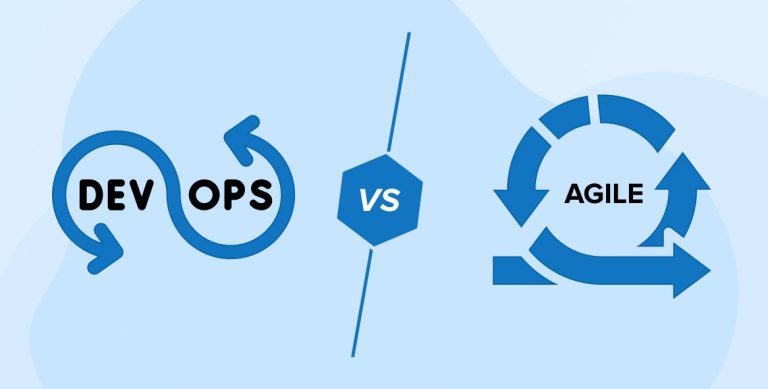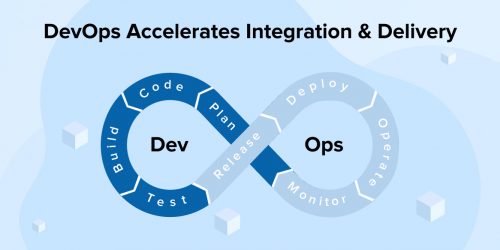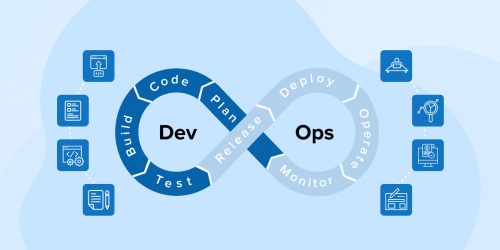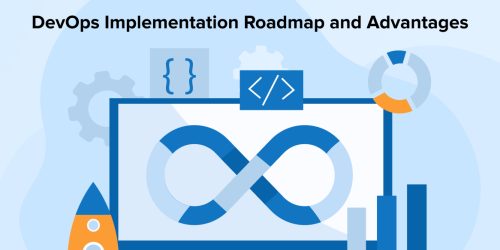Related Blogs

No longer, DevOps is an unknown term. Software development companies and business are grasping DevOps which is incredible, even organizations following Agile methodologies are moving ahead to embrace DevOps. Nonetheless, the digits of adoption are progressing but are causing a great number of disarray too.
Knowing just basics about Agile and DevOps would give a quick thought that both are unique terminologies and while deep diving into each of them the outcomes will be “Agile is about procedures like Scrum, Kanban, Extreme Programming, Dynamic Systems Development Method, Lean while CI(Continuous Integration) and CD(Continuous Delivery) along with automated infrastructure are incorporated in the DevOps methodology”.
With just an overview over mind, let’s attempt to comprehend what precisely Agile and DevOps are, also on whether they are supporters or rivals?
1. Agile and DevOps in Software Development
Agile is a disciplined iterative project management process which favors continual analysis and advancement, an initiative viewpoint that nurtures cooperation, self-association and responsibility, a software development and it’s continuous delivery, and a business approach to meet client’s objectives and requirements.
An organization can’t do Agile, but it can be Agile. Organization can perform Agile processes like Scrum, XP, TDD, BDD, etc. Agility is about to accept the change and to triumph in an invariably changing environment. Even, DevOps is one of the key fixings to add agility in an organization.
DevOps widens the philosophy of Agile, still it depicts that cross-functional team and operation team should perform tasks concurrently. Infrastructure as Code, Monitoring Schemes, Configuration Management, a set of tool chain, Virtualization and Cloud computing are the essence blocks of DevOps.
Automation, Containerization and Continuous Testing – significant privileges of DevOps lead it to be the biggest winner of this year with good acceptance ratio for custom software development.
Avoiding the unnecessary confusions and overlooking the self-supposition, have a look at some of the practical connections (developers can easily connect to each phase) between them.
2. What is Agile?
Agile is an iterative approach for software development and project management. Agile focuses on customer feedback, customer satisfaction, collaboration, and rapid releases. The agile development process concept arose from the software development industry in the early 2000s. It came into life to help the development team react and adapt to all the changing customer demands and market conditions.
When it comes to the agile approach, some of the planning and designing of the complex projects are done upfront, but the entire software development proceeds in small batches. The process also includes the involvement of stakeholders. The development and operations teams have to go through continuous changes and later a usable version of the software is often released. The process to deploy software is quicker in Agile compared to a waterfall methodology. And this offers many benefits but the most important one is that if the software created using Agile practices doesn’t meet the needs then it can easily be remediated in real-time.
Agile principles are the collection of methodologies like eXtreme Programming (XP), Scrum, and other systems of practice. It also helps the agile teams unifying these approaches into one principle. The result of this unification Agile Manifesto. It consists of 12 principles and all of them are based on four core values of the agile approach.
3. Four Core Values of Agile
The top four core values of Agile software development are –
3.1 Individuals and Interactions
The agile manifesto highlights the importance of each development team members’ value and fosters a stimulating and healthy work environment. And to maximize efficiency, agile also encourages constant communication between each of the team members as it allows them to be a part of the entire development process.
3.2 Working Software
Agile believes that documentation cannot hinder deploying software. Before agile, every project used to start with documentation of the requirements and expectations of the working software but now it focuses on embarrassing changes.Also Agile doesn’t spend too much time on documentation.
3.3 Comprehensive Documentation Customer Collaboration
Continuous software development involves customer collaboration on a regular basis. The development and operations teams seek immediate feedback from the customers to take the project in the direction. And for this, one of the best practices is to contract negotiation with the customer before the software development process starts. It helps in avoiding any type of potential miscommunication.
3.4 Responding at Change
When working with agile technology, changes that are required to be made mid-project must be readily accepted as it can directly help in the success of the project. This means that when the new circumstances are adapted and new features embraced, software development methodologies become a success for the software.
After learning everything about Agile, let us go through DevOps and then see which is the best between – DevOps vs Agile competition.
4. What is DevOps?
DevOps is just like a covert military team. It is a technology that combines IT operations and software development. “dev” is taken from the term software development and “ops” is taken from the term IT operations. DevOps focuses on both the development and Operations for continuous development process. It changes the entire software development culture, collaborations between traditional software development teams, and doubles down the automation process for developing software.
5. Three Ways of DevOps
The top three DevOps ways are –
5.1 Systems Thinking
DevOps practice enables the developers to understand that software apps are complex systems.
5.2 Amplifying Feedback Loops
Integration of the DevOps environment in the company enables the team members to have improved bidirectional communication.
5.3 Cultural Change
DevOps culture enables the IT operations teams to have an open mind for continuous experimentations and learning.
5.4 Realistic Kinships
Agile is more than Scrum and Sprint, while DevOps also exceeds constant integration and delivery concept. Agile methodology purely focuses on productivity and reliability, whereas DevOps is concern about the quick work and continuous delivery with high quality.
(Mentioned below is not the difference, rather it is the response of each methodology in particular phase.)
| Phases | Agile | DevOps |
|---|---|---|
| Task Planning | Scrum or Kanban are used to keep the track. Sprints are created to streamline tasks but immediate response is irksome during the sprint. | Planning of tasks like releasing updated system, performing system upgrades plus immediate response can be managed smoothly. |
| Speed | To sustain in fast work chain, sound application structure and solid foundation with underlying framework is mandatory. | Rapid, continuous and automated workflow is the mere concept of DevOps, so to deal with it becomes easier. |
| Risk of changes | Separate sprints are created for major or minor bug fixes or hierarchy of change request and then executed based on priorities. | Instant changes at times increases risk, as minor modification may affect to the architecture in major context. Developers needs to be careful. |
| Deployment | At the end of each sprint, which is decided formerly. | Continuous Integration and Continuous Deployment |
| Quality | Agile applications can fit with desired requirements with quick response in fix time cycle. May be less risky while change request. | DevOps deliver better quality with its automation and early, continual bug removal tactics. |
| Hidden-side Effects | Sprint cycles are to be followed. | Quick changes in software should not be risky. Rapid Delivery need to be certain, not uncertain. |
Debate still doesn’t end up here. Question somewhere still arise.
6. Is DevOps Subset of Agile?
DevOps isn’t a distinct approach, nor a subset, but can be said as a slender expansion of Agile to incorporate operations, team-up as ONE team, achieve the target to conveyance solution completely to the client. DevOps just ruptured the barriers of Agile teams and included automation and continuous processes in the existing procedure of Agile and encouraged the organization agility.
Just like, Waterfall was extended or upgraded to V-Model and iterative model which was further supplanted by Agile and was adopted widely for software development. But, now DevOps is going to be the prominent prospect, justify the continuous improvement in SDLC, justifying that it is merely an extension to the Agile features. All that is required is to grasp, comprehend and instil it.
DevOps and Agile are independent of each other but each of them is an enabler for the other.
In a nutshell, in each Agile Sprint, DevOps concept like CI(Continuous Integration), the CD(Continuous Delivery) can be executed, even in multiple Sprints. Coding and Architectural best practices of Agile and DevOps must be followed by developers to enhance quality, make deployment speedier and keep away from risk factors. Always core focus needs to be on Organizational Agility.

Kamal Sharma
Kamal Sharma is a VP of TatvaSoft which is a custom software development company. He is an accomplished Business Strategist and Tech Visionary with wide-ranging experience in the technology sector. He leads the business operations of the company and creates vision & strategic goals for his colleagues.
Related Service
Custom software development
Know more about Custom software development services
Learn moreSubscribe to our Newsletter
Signup for our newsletter and join 2700+ global business executives and technology experts to receive handpicked industry insights and latest news
Build your Team
Want to Hire Skilled Developers?





Comments
Leave a message...